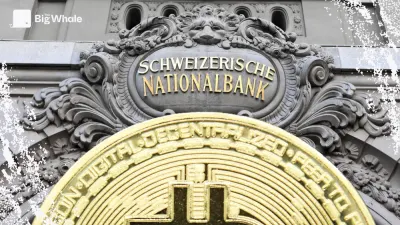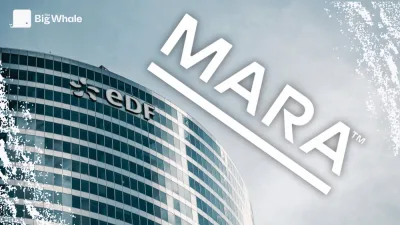TBW - DEX Vaults: what opportunities are there for this little-known investment strategy?

DEXs continue to gain ground against CEXs
Decentralised exchanges (DEXs) continue to gain ground against centralised platforms (CEXs). In January 2024, they accounted for 8.12% of total spot trading volume. A year later, in February 2025, this share has more than doubled, reaching 18.5%.
This rise in power is reflected in concrete terms by a gradual shift in capital flows: now, for every billion dollars traded on CEXs, around $202 million passes through DEXs.
The rise of DEXs accelerated particularly at the start of 2025, confirming an underlying trend. Although centralised platforms retain a clear dominance in absolute volume, the momentum is in favour of decentralised finance. This is due to declining confidence in CEXs-particularly after several scandals and tightened regulations-as well as notable improvements in the user experience on DEXs.
If this trend continues, the crypto trading landscape could see a major rebalancing in the coming years.
.png)
>> Hyperliquid, dYdX, Jupiter, Vertex: the comparison of the best DEX Perps
DEX Perps : Decentralised finance takes on perpetual contracts
DEX Perps, or decentralised perpetual contract trading platforms, are shaking up the crypto exchange ecosystem. Unlike traditional DEXs, these protocols make it possible to speculate on the performance of an asset with leverage, without having to own it. An approach inspired by the perpetual contracts offered on centralised platforms (CEX), but in a version without intermediaries and under the control of users.
In this new wave of platforms, Hyperliquid is emerging as the dominant player. With more than 50% of the total volume of DEX Perps, it is well ahead of competitors such as dYdX, GMX and Jupiter.
Its rise to power has been meteoric: in just a few months, Hyperliquid has seen its market share of perpetual contracts climb to 11%, reaching record levels. This success illustrates a major turning point: for the first time, a decentralised platform is competing directly with a behemoth like Binance.
.png)
How does a DEX Perps work?
The principle behind perpetual contracts is simple: they allow you to bet on the rise (long) or fall (short) of an asset without owning it. The use of leverage can amplify gains... but also losses.
DEX Perps differ from centralised platforms by guaranteeing autonomous management of funds. Unlike CEXs such as Binance, Coinbase or OKX, here, users do not entrust their capital to a third-party entity.
One of the major challenges for these platforms remains liquidity, traditionally provided on CEXs by large players. To remedy this, DEX Perps have developed a vaults system, which allows users to deposit their funds in exchange for a return.
Vaults play a key role in the DEX Perps ecosystem. In practical terms, a user deposits funds in a vault, which then makes them available to the protocol to facilitate exchanges and lend assets to traders. In exchange, they receive a fee fed by transaction costs and a share of the funding fees.
This model benefits directly from market volatility: the greater the fluctuations, the greater the revenue generated by the platform, particularly during crash periods.
.png)
Most platforms display an estimated return on their vaults, but these figures remain indicative. They are based on past performance and in no way guarantee future profits.
The rise of DEX Perps marks a new stage in the disintermediation of finance. As platforms such as Hyperliquid, dYdX and GMX gradually gain a foothold, the question is no longer whether these decentralised alternatives have a future, but to what extent they will succeed in gaining ground against the centralised giants.
Liquidity vaults: mechanisms and performance
The rise of derivatives on the blockchain is accompanied by the emergence of new liquidity tools, among which vaults play a key role. These digital vaults optimise fund management while supporting the market for perpetual contracts. We take a look at some of the leading solutions.
HLP: Hyperliquid's vault that attracts capital
In recent months, Hyperliquid has established itself as one of the most dynamic platforms on the perpetual market, largely thanks to its HLP (Hyperliquidity Provider) vault. This works like a liquidity pool, fed by users' USDC deposits. In return, the liquidity providers receive a share of the trading fees generated by the protocol.
Unlike other solutions, Hyperliquid does not charge any commission on profits: all revenue is paid back to users. However, the funds deposited remain frozen for a minimum of four days before they can be withdrawn.
.png)
Since its launch, the vault has redistributed almost $59.4 million to its investors. However, this momentum was shaken by an incident on 12 March, when a whale executed a strategy targeting the HLP mechanisms, resulting in a loss equivalent to three weeks' earnings. The team reacted quickly by adjusting the protocol to avoid any repetition of the scenario.
The fact remains that market making involves intrinsic risks. Providing liquidity means potentially taking losses on certain positions. A reality that also applies to other vaults in the sector.
JLP: a multi-asset pool on Jupiter Perps
The JLP Pool, launched by Jupiter Perps, is based on a similar model: it acts as a counterparty to traders by lending them assets for their leveraged positions. In exchange, 75% of the trading fees generated are redistributed to the liquidity providers.
Unlike HLP, JLP is not based solely on the USDC, but on a diversified basket of assets, including SOL (47%), ETH (10%), WBTC (11%), USDC (28%) and USDT (4%). This allocation has a direct influence on its performance: while HLP is relatively stable, JLP is more exposed to fluctuations in the crypto market.
Since its launch, the price of JLP has risen from $1.47 to $3.85, peaking at $4.94. But the recent market correction has weighed on its valuation, particularly due to the fall in SOL, BTC and ETH.
.png)
Despite this increased volatility, the JLP's return on investment (ROI) remains impressive: since November 2023, it has performed +152%, peaking at +230% in January 2025.
MegaVault from dYdX: a new player in the vaults ecosystem
dYdX continues to innovate with MegaVault, a feature that allows users to deposit USDC and generate a return by providing liquidity to the platform. Like similar products, the funds deposited are split into a number of 'mini-vaults', each specialising in a specific market. Returns are then aggregated and redistributed to depositors.
MegaVault's sources of return are diversified: they include profit and loss (PnL) from vault positions, funding rate payments, a share of trading fees, as well as other protocol-specific incentives. A significant flexibility for investors: deposited USDC remain accessible without a lock-in period, allowing withdrawal at any time.
.png)
Launched in November 2024, dYdX's MegaVault still has little performance history. However, in its first few months of existence, it generated a return of around +7.43% at the end of February. More time is needed to judge its competitiveness against other solutions on the market.
GMX and its pioneering role in liquidity vaults
Even before Hyperliquid, GMX was the first protocol to introduce this type of product. As early as September 2021, it launched GLP, a vault emblematic of decentralised finance.
GMX's GLP works like an index token, representing a basket of assets held by the protocol. It currently consists of nine cryptocurrencies, including ETH, BTC, LINK, UNI, as well as several stablecoins such as USDC, USDC.e, USDT, DAI and FRAX. This mechanism allows traders to benefit from constant liquidity, while GLP holders receive 70% of the trading fees generated on GMX V1, redistributed in the form of ETH.
Unlike other vaults that rely on price appreciation, the GLP favours direct redistribution of trading fees, with no compounding of interest. Since its launch, GLP holders on V1 have recovered $185 million in trading fees.
With the launch of GMX V2, a new approach has emerged: the GLV Pool. Introduced in September 2024, it automatically optimises the allocation of liquidity between the different markets in the protocol to maximise returns while maintaining diversified exposure. This new generation of vaults redistributes trading costs while dynamically adjusting positions for greater efficiency.
However, as GLV is a recent product, its track record remains limited. Over its first three months, its results remained mixed, partly due to a bear market on altcoins. The development of the product and its adaptation to market conditions will be decisive in assessing its long-term viability.
Drift Protocol
Drift Protocol offers an insurance fund enabling users to deposit USDC and receive hourly rewards from fees generated by trading activity on the platform. Accessible to all, this mechanism enables a portion of the protocol's revenues to be shared.
However, a 13-day delay is imposed before funds can be withdrawn after an exit request, a constraint that aims to stabilise liquidity flows.
Launched with version 2 of Drift in mid-2022, the USDC Insurance Fund is one of the oldest vaults of its type. It now has a total locked-in value (TVL) of $26 million, an amount that is growing steadily, albeit far from Hyperliquid's $500 million.
Not all vaults work in the same way, however. While their main objective remains to provide liquidity, the terms of remuneration vary from project to project, as does the associated level of risk and volatility.
>> Crypto derivatives: faced with regulation, what solutions for traders?
Conclusion
Long reserved for hedge funds, DEX perps trading strategies are now opening up to a wider audience, offering a new approach to providing liquidity on the markets.
But these opportunities are not without risks: each vault presents a different exposure to market fluctuations. In bull markets, products such as JLP, which are more correlated to asset prices, may prove more attractive. Conversely, in a bear market, HLP seems to offer better protection while generating returns.
Other strategies, with varying risk profiles, are also emerging. As innovation in DeFi progresses, new solutions are enabling investors to optimise the use of their stablecoins, illustrating the ongoing evolution of the sector.
>> Erald Ghoos (OKX): "Our MiFID licence changes the game for crypto derivatives in Europe"



